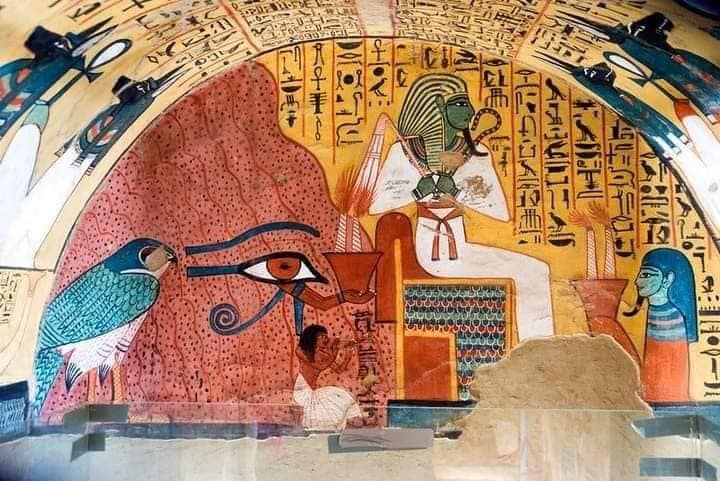The block statues
It is a new type of statue that had its first appearance in the Middle Kingdom, “the 11th and 12th dynasties.” Still, its spread expanded further in the era of the second transition, the era of the modern state, and the late-era, and this type of statue was found in temples, not cemeteries! This is for the owner to benefit from what is offered in the temple from material offerings “food and other things” and moral offerings “represented in the prayers and invitations made by the priests.”
It was also new in its strange position as it represents its owner seated in a form as close to a squat as the knees are close to the chest. The hands are spread over the thighs, then the body is surrounded by a wide robe, and this robe is used to write the name, titles and biography of the statue owner.
It is worth noting that these statues differed in their style. We saw the statue owner alone, another we saw him with his wife, and other times with one of the deities, “especially Ozer”. They were carved from tough stones such as diorite, quartz and granite and were specific to individuals only, not kings, and most scholars had found. This statue was the Frenchman (Georges Legrain) when he found more than 315 statues on the block in 1903 when he discovered the Karnak cache.
Its purpose »
• Some mentioned that this situation was comfortable for the ancient Egyptians and still widespread in Egypt. Therefore, the ancient people carved it out, which is an opinion that we do not favour.
• As for the opinion that most Egyptologists agree upon, this situation refers to the resurrection of anew in the other world because the statue only shows the head, and it is the first thing that emerges from man to live at his birth.
I prefer the first opinion, which is the opinion of my esteemed professor, Ali Radwan. May God have mercy on him. I inferred by a note to me that some of these statues show the foot. If this is the womb from which the head comes, then it is not logical for the foot to appear in the lower and the ancient Egyptian. A person wearing a long robe does it if he sits in this position. In addition, there are double statues such as the statue of Senmut and the daughter of Hatshepsut, so will they be born from the same womb! Or does the teacher include his student in his robe also in similar positions at present? Note, the opinion is the opinion of Dr Ali Radwan .. Linking interpretations are my personal views and linking scenes and similes with logic.


Comment (0)